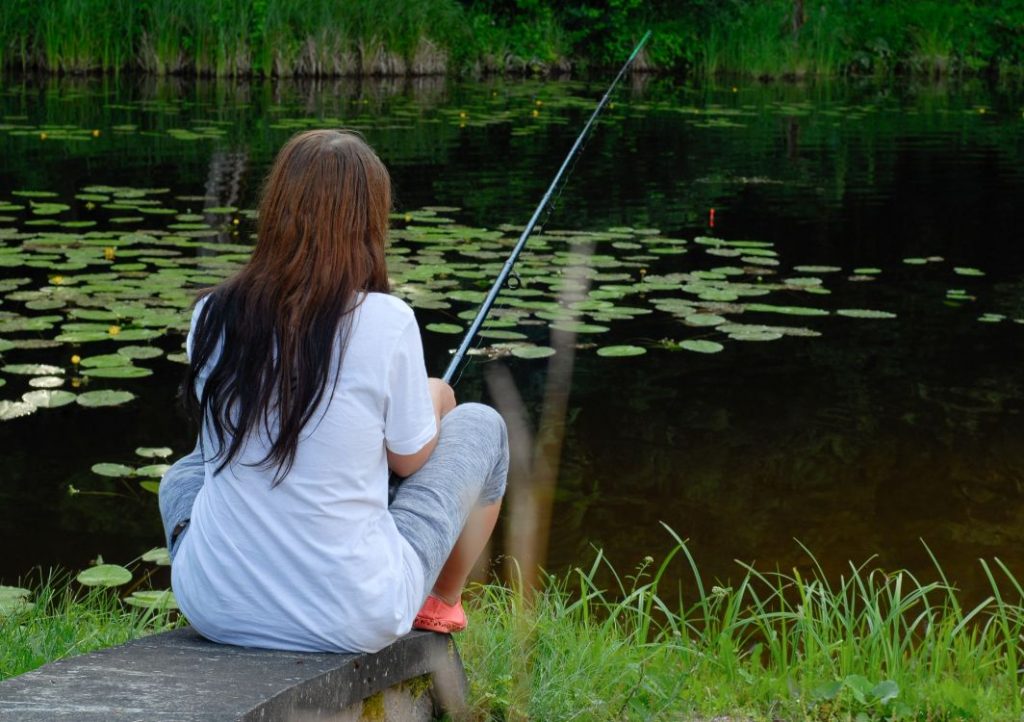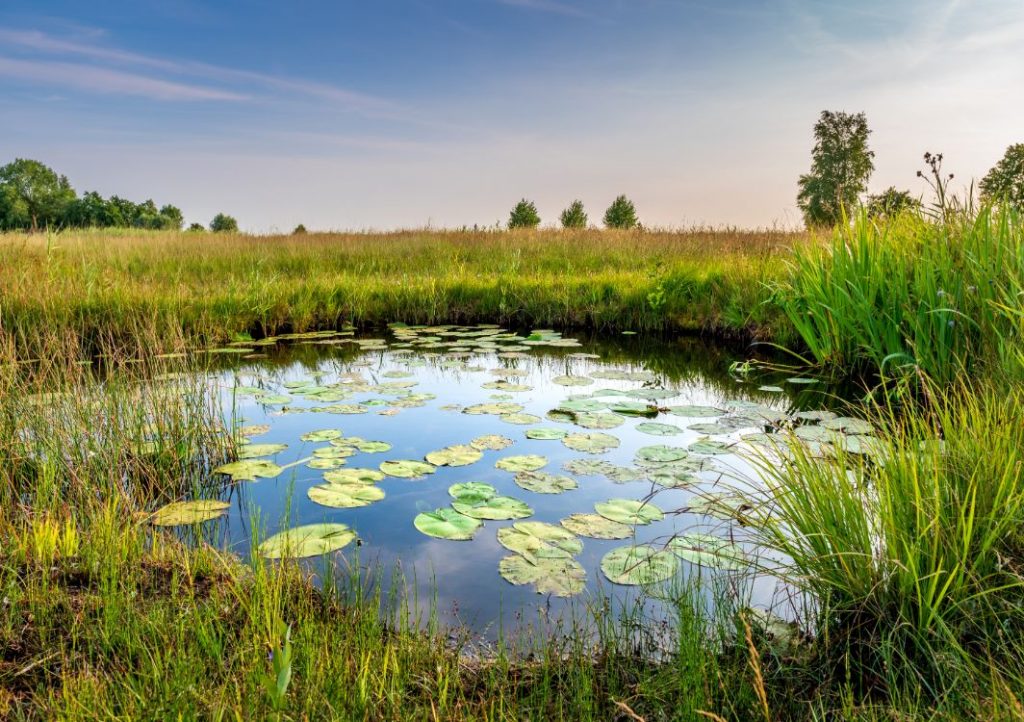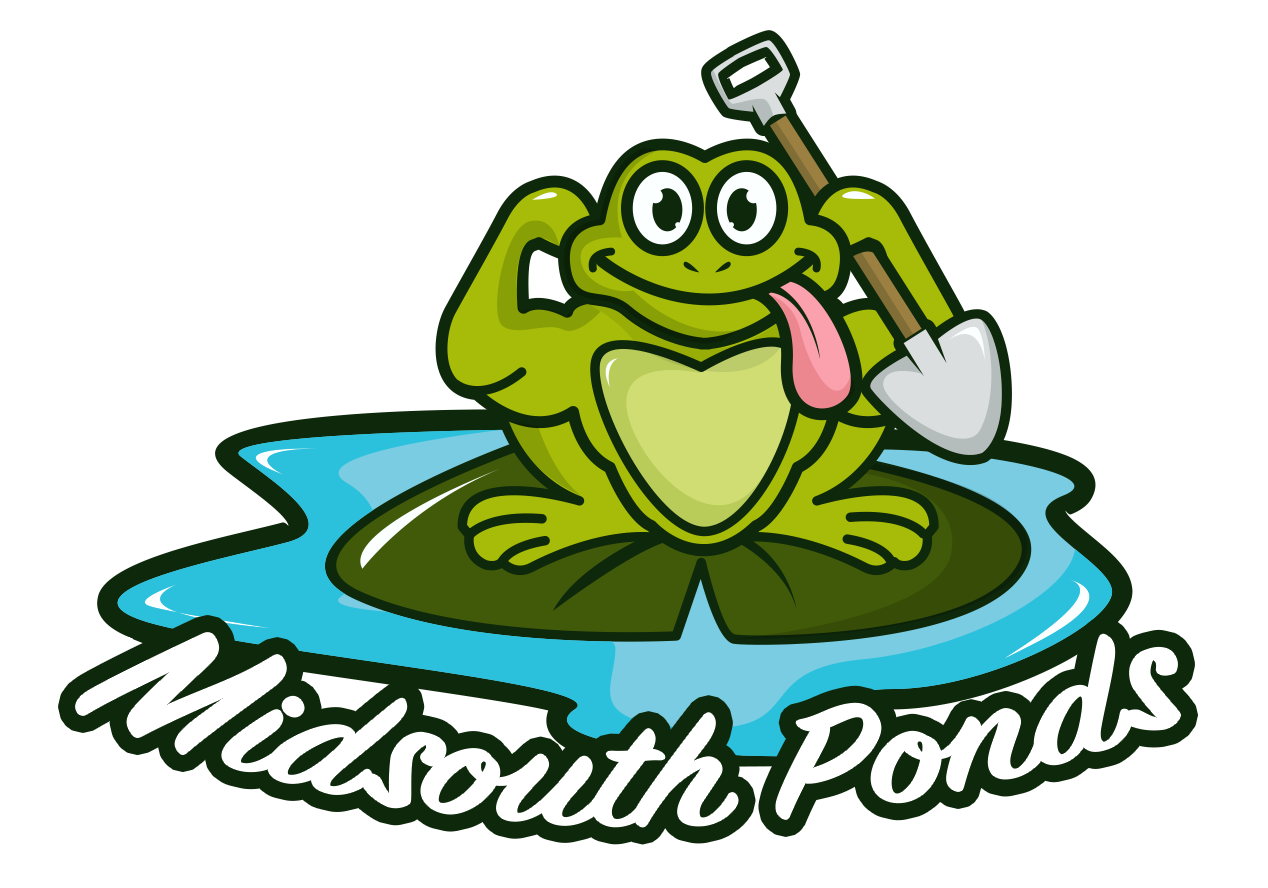For pond owners, addressing aquatic vegetation is essential to overall pond health. Grass carp are an excellent option for keeping aquatic weeds and algae under control. They provide an affordable, long-lasting, and non-chemical solution to the problem of aquatic plant overgrowth. The guide below from Midsouth Ponds will help you determine whether grass carp are right for your pond.
As a bit of a disclaimer, this topic is more focused on larger farm ponds than backyard ponds. Here at Midsouth Ponds, we are pond and water feature enthusiasts and want to educate you on all things water! So even though we do not actually build farm ponds, we know it’s an important topic for many. And without further adieu, here’s everything you need to know about Grass Carp!
Why Controlling Aquatic Vegetation Is Important
As a pond owner, you want to keep your pond attractive and functional. One of the many responsibilities accompanying pond ownership is monitoring vegetation within the pond. While some aquatic vegetation is beneficial to your overall pond health, it’s important to have a strategy for when plant life overwhelms your fish and other pond inhabitants.
Without proper treatment, algae and aquatic weeds can easily overtake natural ponds. Algae, a growth occurring from excessive sunlight, can turn your pond’s water green and swamp-like. Aquatic weeds can quickly grow out of control.
Pond Activities

Unmitigated plant growth can interfere with your favorite pond activities such as swimming, fishing, and boating. Excessive aquatic vegetation negatively affects irrigation and livestock watering, making your life as a pond owner much more challenging.
Oxygen Levels
When a substantial amount of decaying plants decompose in water, the water’s oxygen levels can deplete, often resulting in dead fish. Low oxygen levels can be especially problematic in the summertime, as the sunshine encourages excessive algae growth. This abundance of algae hungrily consumes the pond’s oxygen content, leaving the fish to contend with the resulting dip in oxygen levels.
Pond oxygen levels between 2 and 3ppm (parts per million) are hazardous to fish. The fish can become stressed and more susceptible to disease. Once levels dip below 2ppm, they may die. Ideally, your pond’s oxygen level should contain at least 6mg per liter of dissolved oxygen, depending on the size of the pond. Ponds rarely exceed 10ppm of dissolved oxygen concentration.
Maintaining the appropriate oxygen-to-water ratio will help safeguard the health of your fish. One of the primary ways to ensure your oxygen level is safe is to limit excessive algae growth.
Using Grass Carp To Control Aquatic Vegetation
Some pond owners choose herbicides or other chemical options to control unwanted aquatic vegetation. These commercially available products are expensive and can be potentially hazardous. They also require regular reapplication, which can be time-consuming.
Instead, many pond owners elect to use an organic option for weed control in the form of the carp family. Grass carp, an Asian minnow fish, are an excellent choice for seeking a non-chemical solution to overwhelming pond plant life.
Benefits of Grass Carp
There are many benefits to using grass carp for aquatic plant control. These fish are unusual for being primarily vegetarians, meaning they readily snack on algae and aquatic weeds but will not eat other fish or their eggs. Some of the other major benefits of introducing grass carp to your pond are:
· They grow quickly, and adult grass carp can weigh up to 55 pounds
· Grass carp don’t reproduce in ponds, so you can easily control their growth
· They shave plants rather than fully consuming them, so plant roots stay healthy and intact
· Because they shave rather than yanking by the root, mud remains undisturbed, leaving pond water clear
· Grass carp can be a source of food (they taste delicious!)
· They are a non-chemical, natural option for addressing your pond’s needs
· They recycle nutrients trapped in plants back into the water
· The fish are an affordable aquatic weed control option
· They can maintain weed control over long periods
· While they prefer vegetation, they will also occasionally snack on detritus insects
Potential Issues With Using Grass Carp

Below are some circumstances in which using grass carp to control plant growth is not practical or appropriate.
Invasive Species Designation
Some state regulators consider grass carp an invasive species. This designation is largely due to misinformation surrounding the fish. Some fall into the misconception that grass carp will necessarily reproduce to excess and jeopardize natural ecosystems. But, as mentioned, grass carp will not reproduce in ponds or lakes.
However, if you choose to stock your pond with grass carp, you must prevent the fish from leaving the pond. Should they find their way to flowing water like rivers, they can reproduce at a high rate and threaten natural ecosystems. It’s important to make suitable preparations, which you can do by installing a mesh screen across your pond’s spillway. One should only introduce grass carp to ponds with fish barriers on spillways or no overflow.
Duckponds
Most ducks, particularly dabbling ducks such as mallards, eat aquatic plants. Grass carp and ducks tend to favor the same kinds of vegetation. If maintaining a pond that appears attractive to ducks is important, you may not want to introduce grass carp.
When To Stock and How Much To Stock
If you’ve chosen grass carp for your pond’s vegetation control, it’s important to stock at the right time without overstocking or understocking your pond. It is best not to introduce grass carp as a preventative measure but only when the flora has established itself.
Regarding how much grass carp you should introduce, you will have to consider the goals you have for your pond, what its size is, and how much plant coverage exists in your pond. Ponds with 10-20% of plant coverage likely do not have the amount of vegetation needed to support grass carp. Ponds with 20-40% plant coverage can support 2-5 carp, while 40-60% plant coverage will work for 5-10 carp. Ponds with 60% plant coverage can support 10-20 grass carp.



